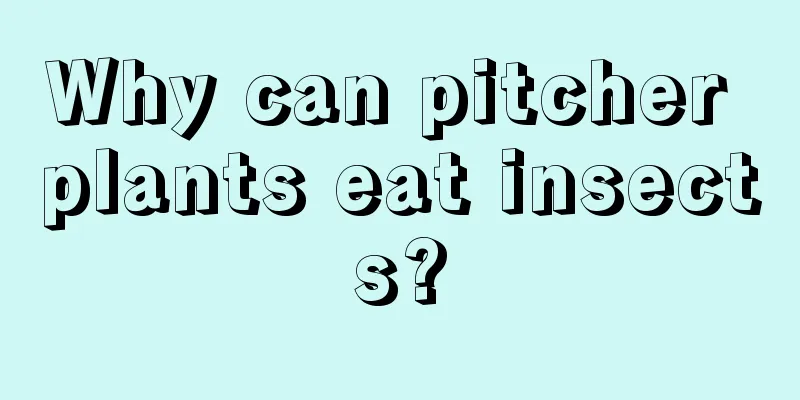Why can pitcher plants eat insects?

How to Eat BugsThe reason why Nepenthes is able to capture and eat flying and crawling insects is because of its unique organ, which is the small cage on its body, which is the thing that catches insects. This organ is a long and deep bottle-shaped organ with a small opening at the top. Once an insect crawls in, it will not be able to get out and will gradually be buried at the bottom of the bottle, becoming the nutrients needed for the growth of the pitcher plant. Why can we eat insects?Some people may ask, isn’t it just a plant? Even if the bottle is deep, it won’t swallow the insect. Is there any mystery? That's right, the cage of this plant is not just a bottle. The inside of the bottle is very smooth. Once the insects enter, they will slide to the bottom of the bottle. Waiting for them at the bottom of the bottle are thousands of plant digestive glands. With the secretion and corrosion of internal digestive juices, the insects that accidentally come in will gradually be anesthetized and lose their ability to move, and then they will be eaten and turned into nutrients. In addition to its internal digestive function, pitcher plants also have the ability to trap. At the top of the bottle, that is, the mouth of the bottle, there grow a large number of nectar glands. These glands secrete a large amount of sweet substances, which can lure groups of insects looking for food. The temptation of delicious food deceives the insects, and they step into the abyss of death step by step and can never climb out again. |
<<: The difference between fairy finger and false epiphyllum
>>: The main value of four-orange flowers
Recommend
Method for raising seedlings of chayote
1. Time It is important to choose the right time ...
What to do if the leaves of the money tree turn yellow
Causes and prevention of yellowing Reason 1: Over...
How to plant Coptis chinensis? Planting techniques and management methods
Coptis chinensis growth environment requirements ...
How to plant lucky clover seeds
1. Select seeds If you want to ensure the germina...
Is green pepper a shade or sun-loving plant?
Do green peppers prefer shade or sun? Green peppe...
When is the best time to prune poplars?
Poplar pruning time The best time to prune poplar...
Heather cultivation methods and precautions
1. Soil It likes rich, moist soil. It can be grow...
Can mint be poured into cola?
Can mint be used to pour cola? Mint can be watere...
How to make Kalanchoe fertilizer yourself
1. Soybean You can soak the wormy or bad soybeans...
Garlic price, how much is garlic per pound
1. How much is one pound The price of garlic vari...
Stem Rot of Lily of the Valley and Its Control
Stem rot of lily of the valley When stem rot occu...
How to Grow Grapes
1. Site selection Before planting grapes, you nee...
The efficacy and function of rapeseed leaves, what are the characteristics of rapeseed
1. Efficacy and function of rapeseed leaves Rapes...
What does Houttuynia cordata look like? Houttuynia cordata pictures
1. Plant shape It is a perennial herb with a heig...
Why are the leaves of a bunch of red small and yellow?
The yellowing of the leaves of Salvia officinalis...









